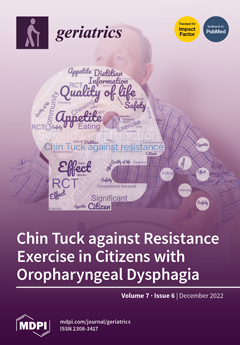Open AccessFeature PaperArticle
The Initial Response to COVID-19 Disruptions for Older People with HIV in Ukraine
by
Julia Rozanova, Katherine M. Rich, Frederick L. Altice, Sheela V. Shenoi, Irina Zaviryukha, Tetiana Kiriazova, Elmira Mamedova, Oleksandr Shipunov, Volodymyr Yariy, Alexandra Deac and Oleksandr Zeziulin
Cited by 2 | Viewed by 2150
Abstract
Ukraine imposed a COVID-19 lockdown in March 2020. From April to June 2020, we surveyed 123 older people with HIV (OPWH) by phone to assess their mental health, engagement in HIV and other healthcare, and substance use using standardised scales. Variables of key
[...] Read more.
Ukraine imposed a COVID-19 lockdown in March 2020. From April to June 2020, we surveyed 123 older people with HIV (OPWH) by phone to assess their mental health, engagement in HIV and other healthcare, and substance use using standardised scales. Variables of key interest were symptoms of depression and symptoms of anxiety. Univariate and multivariable Firth logistic regression models were built to assess factors associated with: (1) symptoms of depression, and (2) symptoms of anxiety. Findings indicated high suicidal ideation (10.6%); 45.5% met the screening criteria for moderate to severe depression; and 35.0% met the criteria for generalised anxiety disorder (GAD). Independent correlates of having moderate to severe depression included being female (AOR: 2.83, 95%CI = 1.19–7.05), having concerns about potential barriers to HIV treatment (AOR: 8.90, 95%CI = 1.31–104.94), and active drug use (AOR: 34.53, 95%CI = 3.02–4885.85). Being female (AOR: 5.30, 95%CI = 2.16–14.30) and having concerns about potential barriers to HIV treatment (AOR: 5.33, 95%CI = 1.22–28.45) were independently correlated with GAD, and over half (58.5%) were willing to provide peer support to other OPWH. These results highlight the impact of the COVID-19 restrictions in Ukraine on mental health for OPWH and support the need to screen for psychiatric and substance use disorders, potentially using telehealth strategies.
Full article






